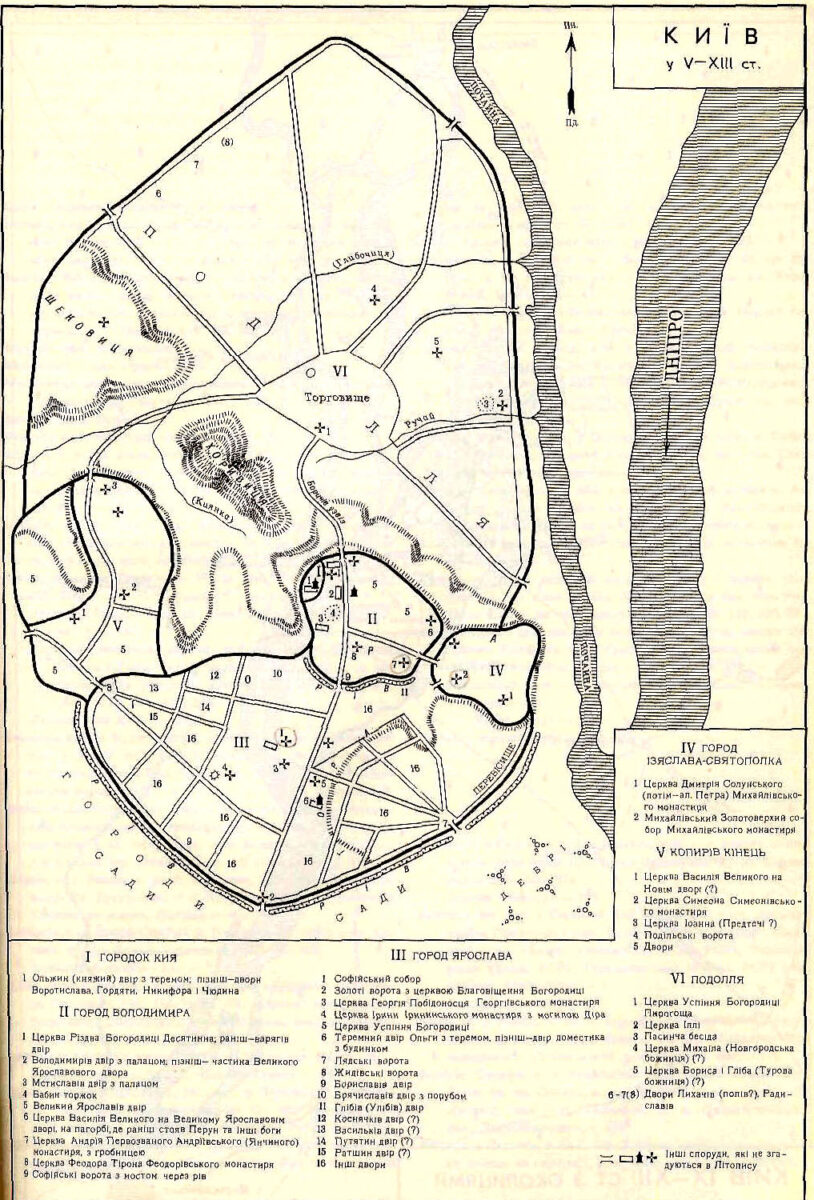650–960
Khazaria ruled an ethnically diverse population of Turkic, Iranian, Finno-Ugrian, Slavic, and North Caucasian peoples and Jews. Arabic texts from the first quarter of the tenth century state that Jews were the smallest religious community in Khazaria; Muslims, Christians and Pagans constituted the majority.
During this period, Jews lived in Kyiv, Chernihiv, and other Khazar strongholds, including in Kerch in the Crimea and on the eastern side of the peninsula.
Distinct Slavic tribes evolved in what today is central and southwestern Ukraine. Protected by the Pax Khazarica, they migrated south along water routes as far as the Black Sea and expanded east of the Dnieper River. They established hill forts, known as horodyshcha or horody, where the surrounding agricultural population came for protection in times of danger. Some horody were large enough to be considered towns and were home to artisans who produced wares and merchants who conducted trade. By the ninth century, there were an estimated 400 horody in the Kyiv area, 350 in Volhynia, 250 in Podolia, and 100 in Galicia. Among the more important horody were Kyiv and Chernihiv.
Read more...
Scholars believe that the largely sedentary Eastern Slavs are the predecessors of today's Ukrainians, Russians and Belarusians (as distinct from Western Slavs, the predecessors of Poles, Czechs, and Slovaks, and the Southern Slavs of the former Yugoslavia). This finding is based not only on a medieval Christian Kyivan chronicle but also archeological studies since the nineteenth century and modern-day linguistic studies.
sources
- Paul Robert Magocsi, A History of Ukraine (Toronto, Second Edition, 2010, 48–49;
- Serhii Plokhy, The Gates of Europe (New York, 2015), 18–19, 21;
- Dan Shapira, "The First Jews of Ukraine," in Polin: Studies in Polish Jewry, Volume 26, Jews and Ukrainians, eds. Yohanan Petrovsky-Shtern, Antony Polonsky (Oxford, 2014), 68;
- Dan Shapira, "So, Who Were the Khazars?" In Tablet, 29 January 2021;
- Omeljan Pritsak, "The Pre-Ashkenazic Jews of Eastern Europe in relation to the Khazars, the Rus' and the Lithuanians," in Ukrainian-Jewish Relations in Historical Perspective, Peter Potichnyj & Howard Aster, eds. (Edmonton, 1988), 6–8;
- Peter B. Golden, "Khazaria," YIVO Encyclopedia of Jews in Eastern Europe (2010).

